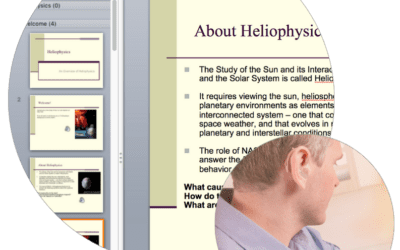Author, manage, track, and deliver Section 508-compliant eLearning out-of-the-box!
Section 508 Compliance for eLearning Should Not Be Difficult.
Unfortunately, thousands of pages of inaccessible eLearning are produced every day. Imagine…
- Being asked to “click here to continue” – but you don’t have a mouse.
- Asked to watch a video – but your speakers do not work.
- Taking an exam – but you are unable to select any of the answers
- Having to click 20 times to proceed to the next page.
Many eLearning developers are completely unaware they are causing this frustration, and many authoring tools make it all but impossible to remedy without expensive retrofitted remediation.
Are you a Section 508 Compliance Expert?
If not, you know that achieving Section 508-compliance for eLearning is difficult. The sheer number of technology layers that must work together is significant. An assistive technology layer (screen readers, for example) adds a new dimension to an already complex landscape. Limitations are imposed on creativity and design when the intricacies of programming the technology for use with assistive technology is required by those unfamiliar with this ever-changing technology.
You don’t need to be an expert because CourseAvenue delivers Section 508-compliant elearning content – right out of the box!
With CourseAvenue Studio, accessibility is built into every course, by default. In fact, Section 508 compliance is guaranteed.
What is CourseAvenue?
CourseAvenue Studio is an easy-to-use elearning authoring platform that helps subject matter experts (with no instructional design experience) quickly transform their raw content (PDFs, PPTs, .Doc) into instructionally sound, visually appealing, and Section 508 accessible courseware 10 to 100X faster.
How is CourseAvenue different than other elearning platforms? To start, when you create an elearning course, CourseAvenue makes sure that:
-
The person who does not use a mouse can use a keyboard or their voice command software to “continue”
-
The video will be closed-captioned, the complete transcript will be there to read, and if needed, the video will be audio-described
-
The answers to the exam questions will be easy to select
-
The “next button” will be accessible quickly and consistently
Every course created with CourseAvenue meets Section 508/WCAG standards without requiring the author to be an expert in accessibility. In fact, if a course created with CourseAvenue fails a Section 508 review, the CourseAvenue support team works with you, the author, and the reviewer to resolve the issues – at no extra cost – eliminating the need for expensive remediation.
Generative AI with CourseAvenue Studio Advisor
Ensure authors and subject matter experts can focus on what they do best—creating impactful, accessible, and engaging content. The demand for high-quality educational content is ever-increasing. However, creating relevant eLearning courseware is time-consuming and expensive, making it difficult for organizations to achieve their instructional outcomes.
With CourseAvenue Studio’s generative AI “Advisor” you can ensure authors and subject matter experts can focus on what they do best—creating impactful, accessible, and engaging content. Tasked with converting massive amounts of raw information into interactive self-paced e-learning that will easily pass a WCAG/Section 508 compliance audit? Watch the video of CourseAvenue in action.
CourseAvenue is dedicated to enabling large-scale production of Accessible eLearning. Need proof?
Over the last 10 years, the USDA has published over a million pages of Section 508 and SCORM conformant e-learning titles. The vast majority of the courses were developed by USDA personnel, most of whom had never created e-learning before.
Want to learn more about the USDA’s success with elearning? Read the case study.





